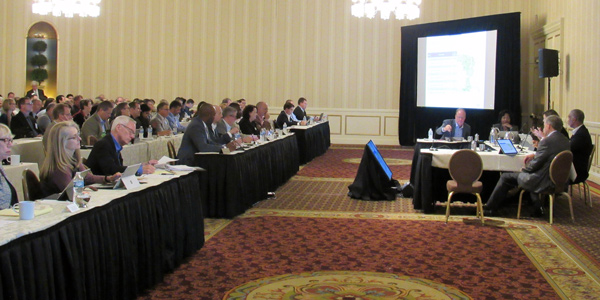By Amanda Durish Cook
ST. PAUL, Minn. — MISO on Tuesday unveiled an annual transmission plan consisting of 434 transmission projects valued at $3 billion.
This year’s proposal so far contains 85 more projects and about $100 million more in investment than the 2017 MISO Transmission Expansion Plan, which in its final form consisted of 349 projects at $2.9 billion.
MTEP 18 includes 85 baseline reliability projects at $607 million, 16 generator interconnection projects at $88 million and two transmission delivery service projects at about $290,000. But like last year’s plan, most projects fall under MISO’s “other” designation: those decided on by transmission owners that are not eligible for cost allocation and represent replacement of aging infrastructure, construction because of further reliability needs and modifications made for environmental purposes. The RTO this year is recommending 340 other projects at slightly more than $2.3 billion.
In-service dates for the projects range from 2018 to 2027. Almost half are transmission line upgrades while 39% are substation projects. New transmission line projects represent just 6% of the projects.
Foxconn and Mackinaw
Among the priciest projects on the MTEP 18 list is the $140 million interconnection to plug Foxconn’s $10 billion plant into We Energies’ network in southeastern Wisconsin. MISO expedited its review of the project in February at the request of developer American Transmission Co. (See MISO Fast-Tracks ATC Foxconn Project Review.)
MISO is setting aside more time to discuss an equally costly project: ATC’s proposal to replace a 138-kV circuit connecting Michigan’s Upper and Lower peninsulas after two submarine cables were damaged in April, most likely by a passing vessel. ATC said one of the cables was rendered permanently inoperable. (See ATC Restores Tx Link Between Michigan Peninsulas.)
MISO Executive Director of System Planning Aubrey Johnson said further stakeholder discussion is needed to explore alternate proposals to the project.
“We expect to have a recommendation prior to December,” Johnson told the System Planning Committee of the Board of Directors during a Sept. 18 meeting.
TMEPs on the Way?
MISO executives said their final MTEP recommendation could contain targeted market efficiency projects (TMEPs), a smaller interregional project category MISO and PJM created in 2017. The RTOs are currently conducting a TMEP study and plan to submit project recommendations for approval by their respective boards in October. (See MISO, PJM Plan 2 Studies for Seams Projects.)
Market Congestion Planning Study
This year’s market congestion planning study identified three projects for possible MTEP inclusion: the $11 million rebuild of a 161-kV line in southern Minnesota; a $2 million, 138-kV reactor project in eastern Wisconsin; and a $16 million upgrade to a 161-kV line in southwestern Indiana. None of the projects passed MISO’s 345-kV threshold to qualify as a cost-shared market efficiency project, so if they proceed, all three will be considered “economic other” projects that don’t qualify for regional cost allocation, meaning costs are assigned locally.
At the meeting, some MISO directors asked why the range of projects resembles past MTEPs when the RTO is paying so much attention to portfolio evolution. They asked whether MISO should be presenting MTEPs that contain a different mix of transmission projects to support a changing generation mix.
MISO Vice President of System Planning Jennifer Curran said the RTO only recommends economic transmission with reasoned business cases that show benefits across multiple future scenarios. She added that MISO’s 2011 slate of multi-value transmission projects was designed with future needs in mind and is still reaping benefits. (See MISO Triennial Review Shows Multi-Value Project Benefits.)
Director Todd Raba asked if MISO is still justified in using its “limited fleet change” MTEP future, the 15-year scenario used to gauge project value in a hypothetical footprint where the RTO’s coal use remains strong and renewable generation remains a minority. The limited change fleet future is one of four futures MISO currently uses.
“We seem to have moved beyond that now,” Raba observed.
“Limited fleet change is not what we’re seeing right now,” Curran acknowledged, adding that MISO has most likely shifted to its continued fleet change future by now.
“We’ve got a lot of resource shift in front of us,” she added, pointing out that MISO’s 90-GW generation interconnection queue is dominated by renewable generation.
A final version of MTEP 18 will go before the board for approval in early December. MISO will hold a Nov. 13 conference call of the board’s SPC to discuss a more complete MTEP 18 and stakeholder reactions to the portfolio.







